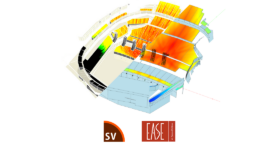News
19 Aug 2015
Wrecking in the USA: A Traveller’s Tale

Subscribe to CX E-News
Southern California – to many people it means Disneyland and Universal Studios; to others it means freeways and traffic jams. Twenty seven million people with cars, and they all seem to be in front of you! Long limousines with tinted windows, convertibles of all shapes and sizes, streamlined cigar shaped motor homes, if it’s got four wheels then the chances are you’ll see it drive by.
However, if you take a closer look, you’ll see that the bulk of all these cars are new or less than ten years old, and a large amount of them are Japanese or Korean. Where have all the big, glossy, chrome filled metal monsters of the Fifties, Sixties and Seventies gone? You know, the ones that immediately spring to mind when someone says “American Cars”.
Well, a lot of them escaped to Las Vegas, away from California’s ever tightening anti pollution laws. But, sadly, most of them didn’t make it. So, where did they go? To find out the answer, and to see something truly mind boggling, I like to take a trip out to some of the car wreckers when I can. There the serious car addict can satisfy their lust by wandering around looking at literally acres of Detroit steel.
Oldsmobile, Plymouth, Chevrolet, Lincoln, Mercury, Dodge, Cadillac, they’re all there. Rusting old clunkers nestle side by side with cars whose only fault is being unfashionably thirsty.
A giant billboard with a grinning raccoon in overalls called Zorro beckons you off the freeway to the industrial wasteland of Santa Fe Springs, where you will find ‘Ecology Auto Recyclers’. This place is so large that on weekends they run a shuttle service from the car park to inside the wrecking yard. Once inside, you will find at least ten acres of cars, neatly laid out in rows as far as you can see. No tools on you? You can buy or rent a Bucket o’ Tools from the many vendors outside in the car park. Don’t want to get greasy? No worries, mate – there are freelance part jobbers in the car park who’ll go and get any part you want – for a price!
Just where do all these cars come from? Some are brought in by the owners when they no longer run or repeatedly fail the Smog Test, some are wrecked in accidents, but most come from auctions held by the various police departments around the Los Angeles and Orange County area.
They say that if a car breaks down on the freeway it is only an average of fifteen minutes before it gets ‘rear ended’ – an expression describing the typical freeway parking accident. During peak hours, many freeways use all lanes, including the emergency ones, so there is literally nowhere to go if you should break down. First rule is to get out of the car and as far off the road surface as you possibly can. The Highway Patrol cars are equipped with enormous rubber bumper overriders to push broken down cars to the next exit and off the freeway to safety.
The fact that they don’t always get there in time is shown by the average of 30 to 40 cars a day that arrive at Ecology! Multiply that by the thirty years they have been in business, and their 3 other locations around Southern California, and you get some idea of the size of the U.S. car market.
Cars stay in the yard from a week to a month, then the engine is taken out and the body shell is crushed. Whatever is left on the body is crushed with it. A Mustang enthusiast pulling a part off a car next to me was stunned to see a ’67 hardtop on its way to the crusher with an immaculate rear bumper and tail lights, items that the Mustang specialists sell for large chunks of money.

There is also a separate section for imported cars, as well. Quirky, notoriously unreliable British sports cars sit rusting in the sun, next to Alfa Romeos, early Audis, Mercedes, Volkswagens, Fiats and other possible classics that stopped working one too many times and just weren’t worth the cost of repairing. If you’ve got a car like this, then chances are you’ll be able to find all those missing hard to find pieces that you’ve been looking for here.
To the Australian car enthusiast, these places are a gold mine. Cars that would be lovingly restored back home are just thrown away. A small ding in the side? Junk it. Blowing a bit of smoke? Junk it. Upholstery starting to crack? Junk it. Ashtrays full? Jun…No, it’s not that bad! However the ‘tyranny of distance’ phenomenon has never been more apparent. If you are a car enthusiast you find yourself thinking, “just how much could I carry as hand luggage?”
However, before you get too excited, don’t expect to find a yard full of 1959 Cadillacs, Hemi Roadrunners, or 1965 Mustang convertibles. These cars have been classics right from the start, and serious collectors have snapped them up a long time ago. But there are still interesting nuggets to be gleaned from a good hunt around. Just be careful taking too many pictures – the staff are notoriously suspicious!
When I was last there, a 66 Thunderbird, one of three to choose from, still had all the panels, badges and interior trim, and probably just needed an engine overhaul. A 67 Mustang hardtop, in a bad shade of turquoise, had a crumpled front guard but was otherwise nearly complete. Plenty of late 60’s and 70’s Cadillac Coupe de Villes, too. The ones no-one wants, unfortunately!
Ecology doesn’t sell complete cars. If you see your dream car there it will cost you the total sum of its parts, which can get expensive. However, another wrecking chain called ‘Pick Your Part’ does sell the complete car if you want it. Just remember that shipping it back in a container will cost you approximately $3500, plus duties, plus converting to Right Hand Drive if it’s less than 30 years old, plus many other charges that just seem to be made up on the spot, as far as I could tell when I brought my Roadrunner Superbird into the country!
To those who ache after a 70’s muscle car, there is one word of warning – hurry! ‘Clunker’ bills are already law in many states enabling the oil companies, electricity generating utilities and other heavy industries to avoid cleaning up old polluting factories and claim EPA credits for every 70’s and earlier car that they destroy. Should these become law everywhere, then these modern day classics will disappear faster than a rat up a drainpipe, never to be seen again.
So when you’ve had enough of Disneyland, Knotts Berry Farm, Universal Studios and Hollywood Boulevard, drop the wife and kids off at the mall, confiscate their credit cards, and take a trip out to one of these wrecking yards. There are plenty of them in the Yellow Pages. At $1 entrance fee you’ll never find better entertainment value, and who knows, you might just find the car of your dreams! Even if you don’t, it’s an enjoyable way to spend a few hours in the warm California sun, reliving the good old days when petrol was 20 cents a gallon, and a real man’s car had an eight litre V8 and a body 20 foot long!
Subscribe
Published monthly since 1991, our famous AV industry magazine is free for download or pay for print. Subscribers also receive CX News, our free weekly email with the latest industry news and jobs.






